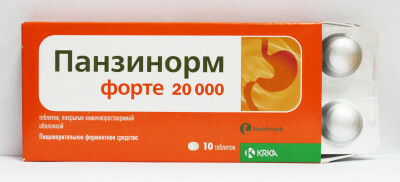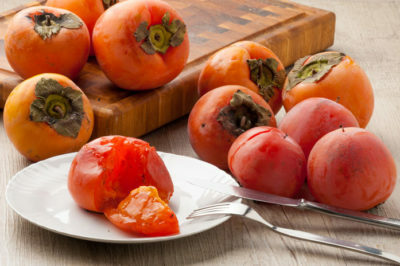1 The main symptoms
The change in the gastric mucosa causing various disruptions to its functioning is one of the manifestations of the disease. The most characteristic sign is pain in the upper abdomen. It can be either acute or dull, aching. Drawing pains occur with an empty stomach. Pain may appear 1-1.5 hours after ingestion.
In addition to pain, chronic gastritis often causes heartburn, nausea, belching. In the mouth there may be an unpleasant aftertaste, and in the stomach there is a feeling of overflow. Often when the disease decreases appetite. There is another discomfort in the abdomen, such as a feeling of heaviness, swelling. Meteorism and impaired intestinal function may occur.
-
 IMPORTANT TO KNOW! Gastritis? Ulcer? To have a stomach ulcer not turned into cancer, drink a glass. ..Read the article & gt; & gt;
IMPORTANT TO KNOW! Gastritis? Ulcer? To have a stomach ulcer not turned into cancer, drink a glass. ..Read the article & gt; & gt;- The first signs of gastritis
- The first signs of gastritis
- Weight loss with gastritis
- Symptoms and treatment of chronic, superficial, erosive gastroduodenitis
- Effective remedy for gastritis and stomach ulcer
In a state of remission, chronic gastritis does not manifest itself in any way, although its seizures can disturb after the abuse of heavy foods orwith strong emotional experiences. Usually exacerbations of chronic gastritis occur in the spring and autumn.
For the purpose of effective treatment, which will relieve the severity of the exacerbation and prevent the development of more dangerous diseases, it is necessary to establish the cause of chronic gastritis and its appearance according to the international classification. Diagnosis is performed precisely in the days of its exacerbation, since in the state of remission some of the analyzes will not show any changes in the body.
Blood and urine tests can identify signs of inflammation and anemia. The analysis of the feces will show how well the food is digested and whether there is hidden blood in the digestive tract. However, the main diagnostic procedure is FGDS - fibrogastroduodenoscopy, in which the endoscope is injected into the stomach through the esophagus. Thanks to FGDS it is possible to examine the diseased organ from the inside, to estimate the volumes of mucosal inflammation, to take samples of gastric fluid and biopsy of the walls of the stomach.
-
 Gastroenterologist IMPORTANT: "I beg you, if you started to worry about abdominal pain, heartburn, nausea, do not do gas in any way. .."Read more & gt; & gt;
Gastroenterologist IMPORTANT: "I beg you, if you started to worry about abdominal pain, heartburn, nausea, do not do gas in any way. .."Read more & gt; & gt;
Samples taken from the stomach are checked for microorganisms, in particular, for the detection of Helicobacter pylori, which causes inflammation in most cases of chronic gastritis. In addition to the detection of microorganisms, the samples obtained at FGDS allow to establish the level of gastric acidity, which is extremely important in the appointment of treatment.
2 Superficial gastritis
With superficial chronic gastritis, the inflammatory process extends only to the upper layer of the gastric mucosa, without affecting the gland and causing their atrophy. Therefore, this gastritis is also called simple or catarrhal. If you remove the provoking factor, then the affected layer of the mucosa is quickly restored.
If you follow a diet prescribed by a doctor, then an exacerbation of superficial chronic gastritis takes place in a week. But to reduce the number of bacteria Helicobacter pylori in the stomach only diet can not. Therefore, the gastroenterologist can prescribe medication to prevent the further spread of the inflammatory process through the stomach.
Strong antibiotics are used to combat Helicobacter pylori. Such treatment has a number of side effects and contraindications, therefore, prescribers and their dosage should only be the attending physician on the basis of all tests, including the FGDs. To get rid of the bacteria, not one antibiotic is used, but their pairs. It will be Clarithromycin with Metronidazole, or with Amoxicillin. The course of treatment is from 10 to 14 days, and it must be completely completed. If the drugs cause severe side effects, the doctor may reduce their dosage.
ADVICE FROM THE MAIN GASTROENTEROLOGIST
Korotov SV: "I can recommend only one remedy for the rapid treatment of Ulcer and Gastritis, which is now recommended by the Ministry of Health. .." Read testimonials & gt; & gt;
In the treatment of superficial gastritis not only antibiotics are used. Since this type of gastric acidity is elevated, normalizers such as omeprazole and ranitidine are prescribed to reduce it. These relatively soft drugs, which do not cause side effects, have a very beneficial effect on the internal environment of the stomach. Reducing the level of acidity, they help accelerate the healing of mucous membranes and reduce pain.
Antacids are prescribed, such as Almagel, Gastal, Maalox, which significantly reduce the acidity of the stomach, removing eructations, heartburn and nausea, normalizing the mucous membranes.

3 Atrophic gastritis
Atrophic( autoimmune) chronic gastritis is a very dangerous disease. It is called precancerous state of the stomach. This gastritis is diagnosed mainly in middle-aged and older people, and it requires immediate treatment.
With atrophic chronic gastritis, there is a degeneration( atrophy) of the cells of the walls of the stomach, as a result of which they cease to function normally and produce gastric juice. That is why with atrophic gastritis the acidity of the stomach is reduced, since the changed cells produce mucus, and not normal gastric juice. Mucus copes well with the protection of the walls of the stomach, but does not participate in the process of digestion, because of which the entire system starts to work incorrectly.
As most of the signs of gastritis( pain, heartburn, nausea) cause it is increased gastric acidity, with atrophic gastritis with its low acidity signs of the disease do not appear immediately. Because of this, it is rare to diagnose the disease in the initial stages.
Atrophy of stomach cells can not be completely cured. But with careful compliance with the prescribed diet and taking prescribed medications, further changes, as well as the onset of cancer, can be avoided.
If the analysis revealed the presence of Helicobacter pylori in the stomach, then the same antibiotics are prescribed as with superficial gastritis.
To normalize the acid balance, inhibitors such as omeprazole, pantoprazole, lansoprazole are prescribed. But these drugs are not enough to ensure that the level of acid in the stomach has risen to the required level. Therefore, with atrophic gastritis, preparations of hydrochloric acid and gastric juice enzymes are prescribed. This is called substitution therapy.
Among drugs with gastric enzymes, Pancreatin, Vestal, Mezim, Penzinorm are most often prescribed. Thanks to them, it is possible to reduce the burden on the stomach and other digestive organs, which contributes to better assimilation of food. In addition to enzymes prescribed Acidin-pepsin-tablets, which, getting into the water, form hydrochloric acid. A preparation such as natural gastric juice can also be prescribed, which is very effective due to the natural content of both enzymes and acids in it.

With atrophic chronic gastritis, the results of tests can reveal a deficiency of vitamin B12 in the body. In this case, patients are prescribed the necessary vitamin in the form of tablets or injections.
4 Gastritis, unspecified
Unspecified chronic gastritis usually occurs against a background of increased acidity and is characterized by the concentration of inflammatory processes in the mucous in certain areas of the stomach. In 80% of cases with a chronic gastritis unspecified, a large number of Helicobacter pylori bacteria is detected.

Depending on the localization of inflammation in the mucous membranes of unspecified chronic gastritis, there are two types:
- antral;
- foundation.
With antral gastritis, the inflammation is in the lowest part of the stomach, where it passes into the duodenum. In medicine, antral gastritis is also called gastritis of type B. Because of the localization of the inflammation of the mucous membrane, this kind of gastritis can later cause diseases of the duodenum. And it is antral gastritis that provokes the appearance of ulcers in the stomach and duodenum.
The most common form of gastritis is diagnosed very rarely. With it, the inflammatory processes in the mucous are located in the middle and upper parts of the stomach. This is where the glands that produce hydrochloric acid are located. Because of this localization of inflammation, the glands function is disturbed and the acidity of the stomach changes.
Treatment of any form of unspecified chronic gastritis is similar to treatment of superficial chronic gastritis. If necessary, vitamin B12 is prescribed.
5 Diet
Regardless of the type of chronic gastritis and the peculiarities of its drug treatment, the diet and diet for any such disease are the same. They are aimed at facilitating the work of the gastrointestinal tract and reducing the load on the stomach.
Hunger should be avoided, so meals should be frequent, but should be consumed in small portions. Fatty, fried, sharp and salty dishes are best excluded completely from the diet. Be sure to use porridge: oatmeal, buckwheat, millet. It is desirable to cook meat for steaming or boiling. Fried dishes can be consumed during periods of remission, but it is desirable that the roasting be soft, without crust.
It is compulsory to include fresh and boiled vegetables in the diet. Fruits should be consumed either half an hour before meals, or 1-1.5 hours after. This mode of eating is due to the fact that the fruit in the stomach is processed quickly enough. If shortly before they were eaten, for example, a meat dish, then the overcooked product lingers in the stomach, causing additional irritation to the mucous.
Sweet dishes, desserts and chocolate should be consumed in small quantities. Of the drinks you need to give up strong tea and coffee, completely eliminate carbonated drinks, juices with a high content of preservatives and alcohol.
Depending on the characteristics of the body and the type of chronic gastritis, it is necessary to reduce the consumption of milk and dairy products, or, conversely, to increase their consumption, especially kefir and cottage cheese.
- The first signs of gastritis
- 1 Main symptoms
- 2 Superficial gastritis
- 3 Atrophic gastritis
- 4 Gastritis unspecified
- 5 Diet
Occupying the medical classification of three positions in the class 29, chronic gastritis( ICD code 10) is a very common disease, which is often detected not only in adults, but also in high school students.
Chronic gastritis most often occurs due to a regular violation of diet and eating a large amount of fatty, spicy, salty, sweet food, as well as carbonated and alcoholic beverages. In addition, it can often cause stress, anxiety, and anxiety. That is why in the modern world this disease is so widespread.
Do you have gastritis?
GALINA SAVINA: "How easy is it to cure gastritis at home for 1 month. A proven method - write down a recipe. ..!"Read more & gt; & gt;
In addition to neurological causes and malnutrition, a number of changes in the gastric mucosa are due to other diseases and the use of potent drugs, including antibiotics. Another common cause of gastritis is the bacterium Helicobacter pylori and other microorganisms.
The causes that cause a chronic form, provoke the appearance of a disease such as erosive gastritis, the code for which ICD is K29.0.This gastritis is manifested by single attacks in the event of irritating factors and passes relatively quickly. However, erosive, or acute, gastritis can provoke the appearance of chronic gastritis, if ignored.
With the 10th revision of the International Classification of Diseases( ICD 10), stomach diseases were included in Class 29, where, in addition to chronic gastritis, other types of it are indicated:
- K29.0 - acute hemorrhagic gastritis;
- K29.1 - other acute gastritis;
- K29.2 - alcoholic gastritis;
- K29.3 - chronic superficial gastritis;
- K29.4 - chronic atrophic gastritis( mucosal atrophy);
- K29.5 - chronic gastritis, unspecified( antral and fundus);
- K29.6 - other gastritis;
- K29.7 - gastritis, unspecified.
For all their similarities, each of the types of chronic gastritis has its own peculiarities of development and course of the disease, as well as the ways of their treatment.



